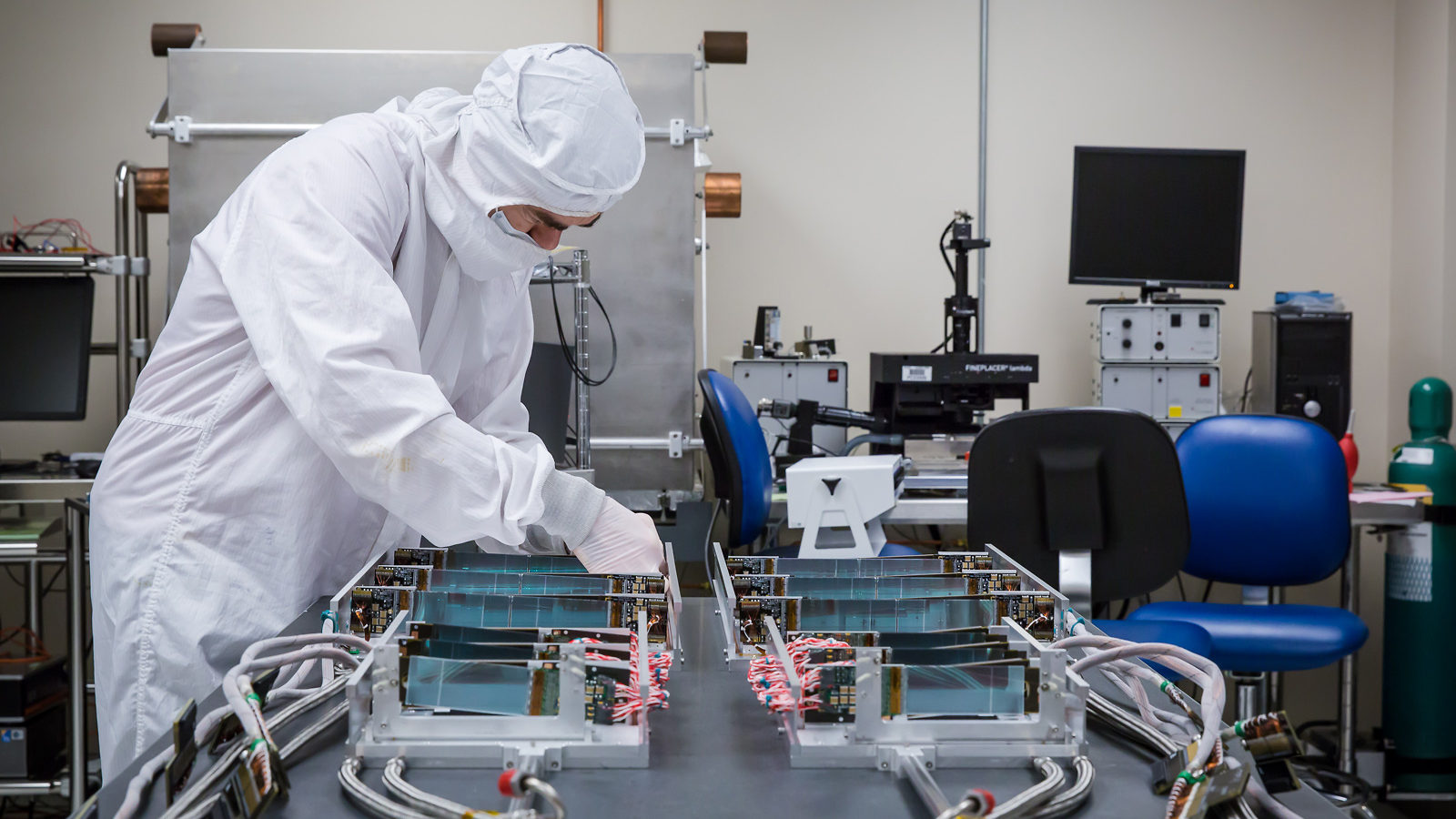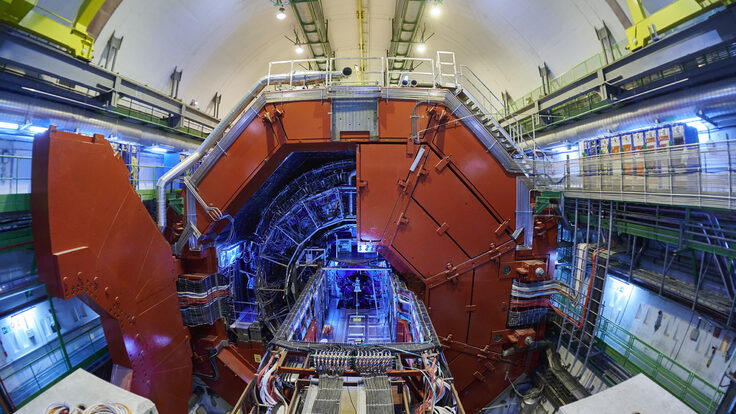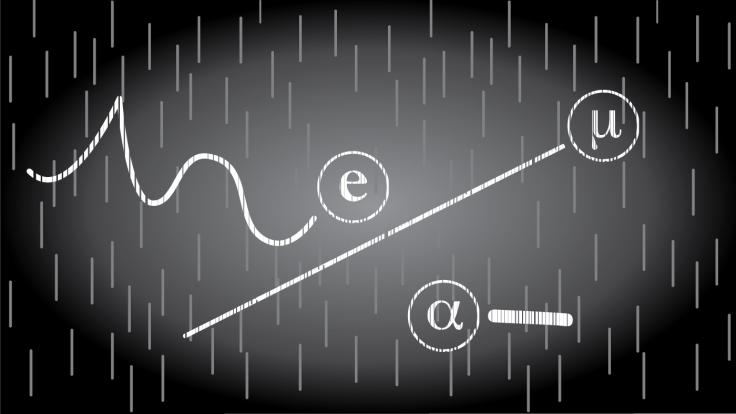The matter we know accounts for less than 5 percent of the universe; the rest is filled with invisible dark matter and dark energy. Scientists working on a new experiment to be conducted at Thomas Jefferson National Accelerator Facility in Virginia hope to shed light on some of those cosmic unknowns.
According to certain theories known as hidden-sector models, dark matter is thought to consist of particles that interact with regular matter through gravitation (which is why we know about it) but not through the electromagnetic, strong and weak fundamental forces (which is why it is hard to detect). Such dark matter would interact with regular matter and with itself through yet-to-be-discovered hidden-sector forces. Scientists believe that heavy photons—also called dark photons—might be mediators of such a dark force, just as regular photons are carriers of the electromagnetic force between normal charged particles.
The Heavy Photon Search at Jefferson Lab will hunt for these dark, more massive cousins of light.
“The heavy photon could be the key to a whole rich world with many new dark particles and forces,” says Rouven Essig, a Stony Brook University theoretical physicist who in recent years helped develop the theory for heavy-photon searches.
Although the idea of heavy photons has been around for almost 30 years, it gained new interest just a few years ago when theorists suggested that it could explain why several experiments detected more high-energy positrons—the antimatter partners of electrons—than scientists had expected in the cosmic radiation of space. Data from the PAMELA satellite experiment; the AMS instrument aboard the International Space Station; the LAT experiment of the Fermi Gamma-ray Space Telescope and others have all reported finding an excess of positrons.
“The positron excess could potentially stem from dark matter particles that annihilate each other,” Essig says. “However, the data suggest a new force between dark matter particles, with the heavy photon as its carrier.”
Creating particles of dark light
If heavy photons exist, researchers want to create them in the lab.
Theoretically, a heavy photon can transform into what is known as a virtual photon—a short-lived fluctuation of electromagnetic energy with mass—and vice versa. This should happen only very rarely and for a very short time, but it still means that experiments that produce virtual photons could in principle also generate heavy photons. Producing enormous numbers of virtual photons may create detectable amounts of heavy ones.
At Jefferson Lab’s Continuous Electron Beam Accelerator Facility, CEBAF, scientists will catapult electrons into a tungsten target, which will generate large numbers of virtual photons—and perhaps some heavy photons, too.
“CEBAF provides a very stable, highly intense electron beam that is almost continuous,” says Jefferson Lab’s Stepan Stepanyan, one of three spokespersons for the international HPS collaboration, which includes more than 70 scientists. “It is a unique place for performing this experiment.”
The virtual photons and potential heavy photons produced at CEBAF will go on to decay into pairs of electrons and positrons. A silicon detector placed right behind the target will then track the pairs’ flight paths, and an electromagnetic calorimeter will measure their energies. Researchers will use this information to reconstruct the exact location in which the electron-positron pair was produced and to determine the mass of the original photon that created the pair. Both are important data points for picking the heavy photons out of the bunch.
The photon mass measured in the experiment matters because a heavy photon has a unique mass, whereas virtual photons appear with a broad range of masses. “The heavy photon would reveal itself as a sharp bump on top of a smooth background from the virtual photon decays,” says SLAC National Accelerator Laboratory’s John Jaros, another HPS spokesperson.
The location in which the electron-positron pair was produced also matters because virtual photons decay almost instantaneously within the target, says Timothy Nelson, project lead for the silicon detector, which is being built at SLAC. Heavy photons could decay more slowly, after traveling beyond the target. So photons that decay outside the target can only be heavy ones. The HPS silicon detector’s unique ability to identify outside-of-target decays sets it apart from other experiments currently participating in a worldwide hunt for heavy photons.
The HPS calorimeter, whose construction was led by researchers from the French Institut de Physique Nucléaire, the Italian Istituto Nazionale di Fisica Nucleare and Jefferson Lab, is currently being tested at Jefferson Lab, while scientists at SLAC plan to ship their detector early next year. The experiment is scheduled to begin in the spring of 2015.







